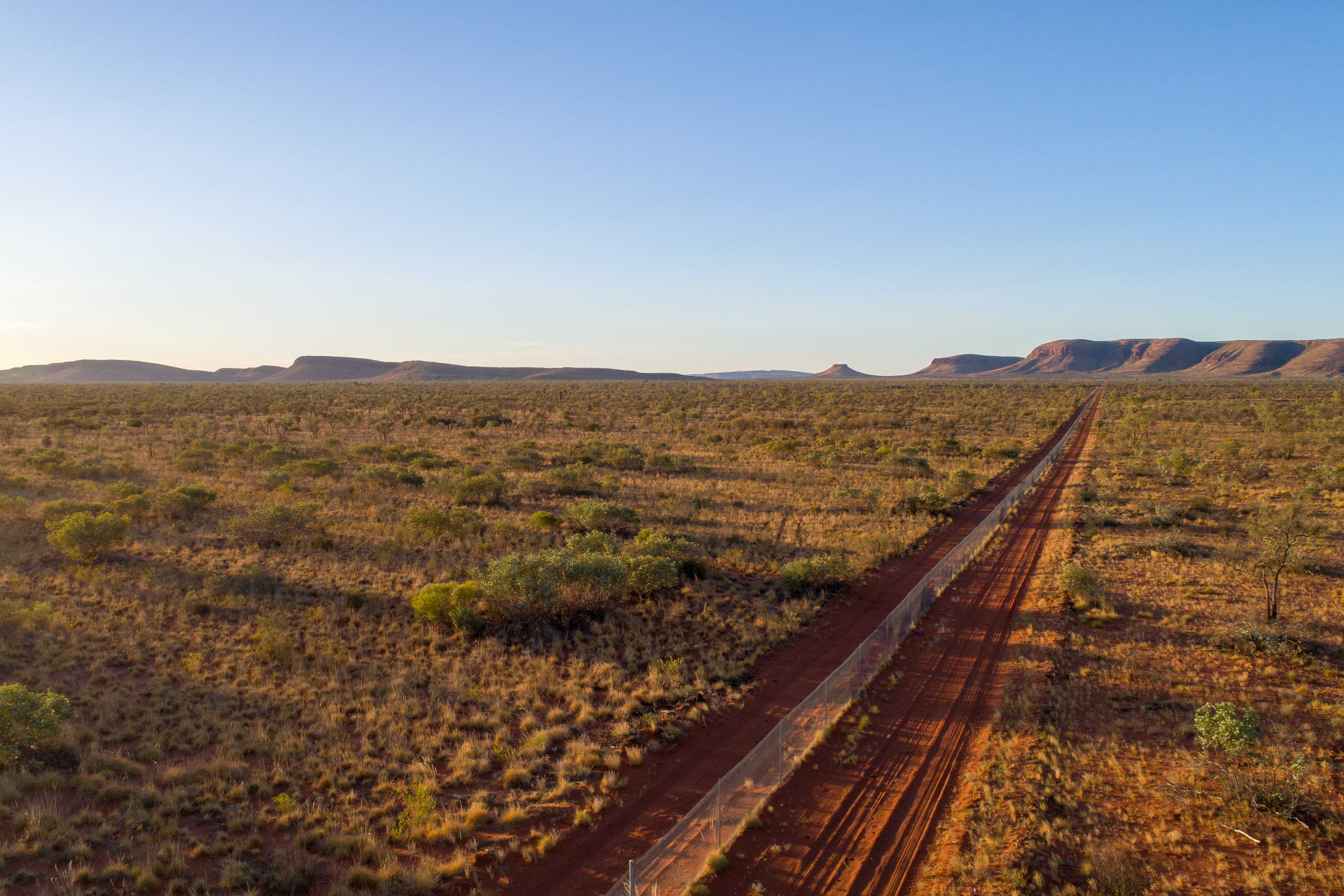Newhaven Wildlife Sanctuary Stage 1 Declared Feral-Free
Australian Wildlife Conservancy, n.d
AWC’s ambitious project to restore central Australia’s lost biodiversity at Newhaven Wildlife Sanctuary has reached a new milestone – the eradication of all feral predators from the 9,400-hectare fenced area, making Newhaven home to the largest feral-free area on mainland Australia.
Watch the video below to learn how this ground-breaking project at Newhaven is set to prevent the Mala – and nine other mammals – from experiencing a tragic extinction fate.
This major accomplishment sets the stage for AWC to commence one of the world’s most significant rewilding projects, with the return of at least 10 endangered mammals to central Australia, as CEO Tim Allard explains:
“We will see these mammals get to work as ecological engineers, and will quickly see a change across the landscape, restoring balance to the ecological health of the system.
This project is a direct intervention to Australia’s catastrophic extinction record, it will soon be like taking a step back to a time before European settlement and the introduction of feral predators and feral herbivores.”
The Newhaven stage 1 feral-free area is part of AWC’s strategy of building a network of large-scale, fenced, feral predator-free areas across Australia. These safe havens are critical to the survival of Australia’s most endangered mammals, like the Mala and Bilby. Without them, many of Australia’s small to medium-sized mammals will suffer the same fate as the Lesser Bilby and the Kuluwarri, and become extinct.
Feral cats, which kill millions of native animals every night, are the single greatest threat to Australia’s endangered wildlife, especially mammals. One in three native mammals is at risk of being added to Australia’s shocking extinction record – already the worst in the world with 31 mammals (10 per cent of our original mammal fauna) now listed as extinct.
Implementing Stage 1 of this ambitious project has been a major undertaking involving construction of a specially designed, 1.8 metre-high, 44-kilometre, feral predator-proof fence. Once fence construction was complete, AWC faced the formidable task of eradicating feral animals from a vast 9,400 hectare area. The removal of cats, foxes and rabbits required the expertise of AWC’s feral control officers working in tandem with AWC’s Newhaven Warlpiri Rangers – among the best cat trackers in the world.
The last feral cat was caught on 4 December 2018. In total 46 cats, two foxes and all rabbits were removed from the area. Intensive monitoring, using a combination of camera traps, tracking and dusting, has since been undertaken to ensure the area is entirely free of feral animals. With no further evidence of any feral animals inhabiting the area since 4 December, Stage 1 can now be declared feral predator-free.

Photo: Brad Leue/AWC
Mala, Red-tailed Phascogales and Numbats are the first species to be reintroduced to this central Australian haven this year. A small population of Mala has already been established at Newhaven (within a smaller, 150-hectare purpose-built fenced area) following an emergency translocation of 27 Mala from Watarrka National Park in late 2017. This population was supplemented with another 30 individuals from AWC’s Scotia Wildlife Sanctuary in 2018, with a further translocation planned this year.
As reintroductions into Stage 1 get underway, AWC is beginning initial planning for Stage 2, which will expand the feral predator-free area at Newhaven to a massive 100,000 hectares.

Table of species set to benefit from the Newhaven project. The populations of six threatened mammals are set to double.